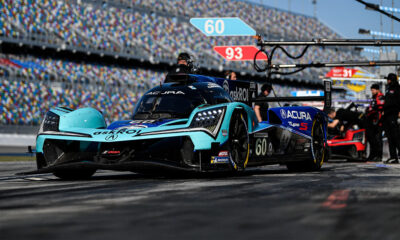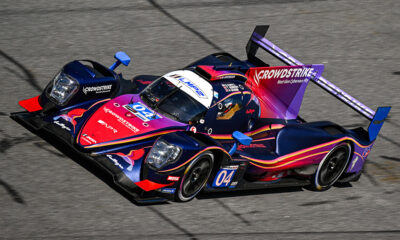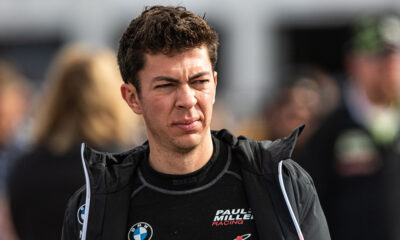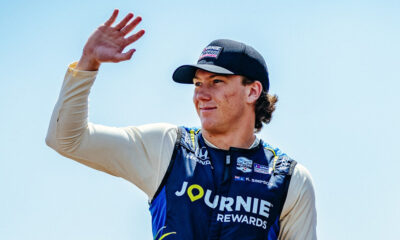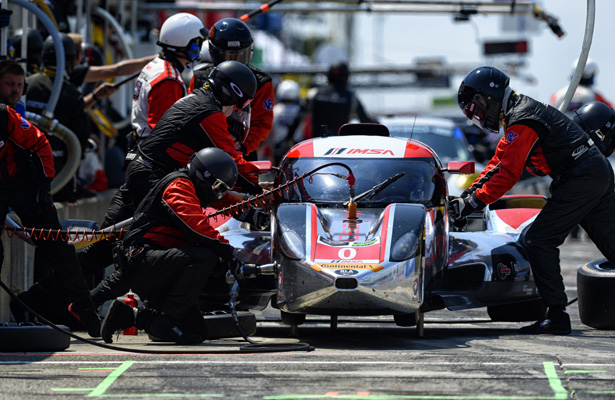
Photo: IMSA
In an effort to improve overall performance, the DeltaWing Racing Cars team has made numerous updates to the revolutionary DeltaWing coupe in recent weeks.
As the team heads to the Mobil 1 SportsCar Grand Prix at Canadian Tire Motorsports Park – a fast, flowing track that allows the innovative sports car prototype to maximize its straight line speed – team manager Tim Keene and race engineer Alan Mugglestone highlight these updates.
The main areas of development have been the gearbox and the differential. As the coupe increases in performance, the balance between the car’s light weight and the need for stronger components has been a very delicate proposition.
The team incrementally added to the strength and layout of the gearbox, with wider gears, stronger bevel gears and now a stronger mounting. The team works with suppliers for these components but the bulk of the DeltaWing coupe’s parts are designed and built by the team.
The team has also successfully tested a differential, which raced for the first time at Watkins Glen.
The DeltaWing was originally designed with a very complicated and experimental electronic differential that would not only help the car drive, but turn under braking. For a number of reasons, the concept was abandoned in favor of an “open” differential.
The new differential performed well at tests last month and helped put the DeltaWing coupe in the top seven for much of the first two hours at The Glen, while the car’s fuel efficiency put the car in the lead during pit stops before a problem with the gearbox mounting ended the day.
Keene and Mugglestone are optimistic heading into the weekend at CTMP, where the team saw competitive times last season.
“The DeltaWing coupe is more suited to a track that allows constant momentum,” said Keene. “The Daytona Prototypes have so much more horsepower and torque off of slow corners than we do, so the more we can keep the smaller engine revved up the better it is for us – and these next two tracks lend themselves to that.
“Given the weight of the car, our aero is very efficient for high speed because most of our downforce comes from the bottom of the car rather than large wings or dive planes. It’s a much more efficient way to create downforce with less drag, which is the car’s basic concept.”
“The DeltaWing concept doesn’t produce a huge amount of downforce compared to a DP or a P2,” Mugglestone added. “It was designed to be a very low drag, fuel efficient car. So when you lose a small amount of downforce as we did when we went from the roadster to the coupe, it’s a much larger percentage.
‘The switch to Continental tires – with a bit less width on the rear tire – enabled us to modify the floor and get some of that downforce back.
“With the limited slip differential we’re running now, an unloaded wheel will transfer torque to the loaded wheel. So we picked up traction in the corners, which puts the gearbox under the same stress but for longer periods of time.
“We’ve backed off the horsepower to the point where we know the engine is not breaking the gearbox, because we’re below the recommended torque. We’re going faster because we have more grip, both from the tires and from the fact that we now have two rear wheels driving forward. The stronger gearbox should be able to handle that.”
As IMSA finds the balance of performance between the three disparate members of the Prototype class – the Daytona Prototype, the P2 and the DeltaWing coupe – where does the DeltaWing slot in alongside its competitors?
“We’re somewhere between a DP and a P2 in speed,” said Mugglestone. “We don’t have the DP’s power, but we’re lighter weight and we have less drag, so we actually have the acceleration of a DP – but because we didn’t have a differential in the car, we haven’t been able to use it. The P2s are at the opposite end of the scale, with much better cornering ability than either the DP or us but more drag and less horsepower.
“If you break down the numbers, we’re actually closer to a DP. That’s why CTMP should suit the car, since we can use the straight line speed and keep momentum going.”
As the season continues, the DeltaWing team goal is simple: to maintain the delicate balance between performance, weight and reliability.
“The changes we’ve made will strengthen us for the remainder of the year,” said Keene, “and I expect to see the results of that starting this weekend.
“We’re looking forward to a good weekend, since fast, flowing tracks like CTMP are favorable to the DeltaWing. So getting to the finish is the priority and if we do that, I expect a good result.”
Katherine Legge joins a returning Andy Meyrick. who is coming off two Blancpain victories in the Bentley GT3, behind the wheel of the DeltaWing coupe this weekend.




















